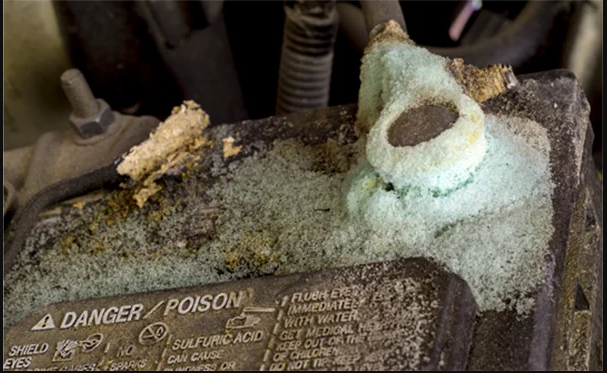
Workplace Safety
Workplace injuries are all too common in the warehouses and battery maintenance for material handling equipment is a typical culprit. The ongoing maintenance required to keep flooded lead acid batteries running presents a danger to the workers tasked with charging, watering and changing batteries.
Batteries power equipment on construction sites, in tractors, trucks and automobiles; and most of them contain hazardous substances like lead and sulfuric acid. Unless workers who maintain, recharge and operate batteries know the risks and how to mitigate them, they can suffer severe workplace injuries. New Lithium-ion batteries eliminate most of these issues because they are self-contained and maintenance-free. Iron phosphate, a subset of Li-ion is the safest chemistry available, and its long cycle life means that it will last the lifetime of the truck.

Lead-Acid Batteries: Hazards, Precautions and Maintenance
The charging of lead-acid batteries is hazardous, but many workers may not remember this since the activity is so routine. The three most common risks are hydrogen gas formation when the battery is being charged, exposure to sulfuric acid from spills and leaks, and physical injuries from the batteries’ weight. Repetitive use injuries, such as sprains and strains are common. Also the highly corrosive electrolytes in batteries can cause respiratory irritation, eye damage, skin irritation, and can even erode tooth enamel. The sheer size of material handling batteries means that crush injuries also occur during battery changes.
The corrosive electrolyte material is shown in the image of a damaged lead acid-battery.
An overview of the risky maintenance for lead-acid batteries
The fluid level is extremely important and a safe level requires regular watering. Overwatering and underwatering can both damage the battery. If too much water was added before charging, the electrolyte levels will expand and cause the battery to overflow and damage the battery.
Conventional batteries contain a liquid “electrolyte” which is a mixture of sulfuric acid and water. The plates in a lead battery contain an active material that should be continuously bathed in electrolytes while oxygen and hydrogen gas are released during charging.
When batteries are being recharged, they generate hydrogen gas that is explosive in certain concentrations in air, so the ventilation system must provide enough fresh air to prevent an explosion.
The electrical voltage created by batteries can ignite flammable materials and cause severe burns. Workers have been injured and killed when loose or sparking battery connections ignited gasoline and solvent fumes during vehicle maintenance.
Wear personal protection equipment such as protective eyewear and gloves when working on batteries. Splashing acid is a risk, and personal protective equipment like chemical splash goggles, a face shield and gloves must be worn when working on batteries.
First aid facilities, eye wash stations, and emergency showers are necessary to reduce the severity of accidental contacts.
